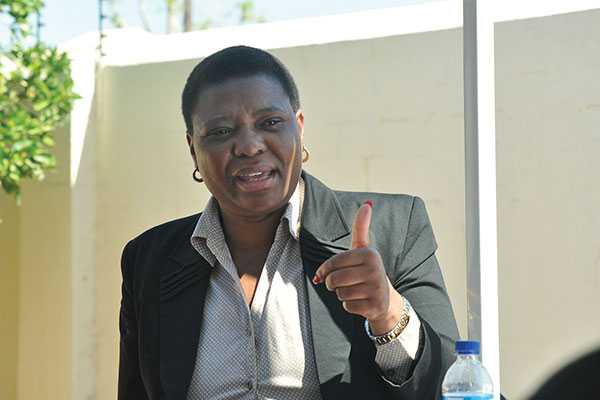HIV wears a female face
According to the UNAIDS When Women Lead; Change Happens report of 2017, HIV and AIDS is today the, “...leading cause of death among women aged 30 - 49 globally.” Compounding this figure is information from the same report, which states that 18.6 million women and girls are currently living with HIV globally with one million new infections per year estimated for this key population. Corroborating this data from UNAIDS is information from the Botswana AIDS Impact Survey (BAIS).
In 2008 the results of BAIS III indicated that 17.6 percent of Batswana were living with HIV and the prevalence amongst females was higher at 20.4 percent while males had 14.2 percent. The 2013 BAIS results continued to show the undue impact the disease is having on women with a relatively higher prevalence rate of 20.8 percent compared to 15.6 percent for males.
Cindy Kelemi from the Botswana Network on Ethics, Law and HIV and AIDS or BONELA states that, “both studies verify that HIV impacts women more than men and there remains no doubt that HIV is wearing a female face.” Other results from the BAIS 2013 survey further highlight how females are disproportionately affected by HIV, with prevalence predominantly higher among females particularly those aged 25 and 44 years old. Kelemi points to religious and cultural perceptions, which perpetuate HIV stigma and also hinder the community’s response to HIV and AIDS treatment, care and support services or messages.
Gender Based Violence (GBV) is also cited as a debilitating factor, which prevents women to negotiate safer sex. The Gender Based Violence Indicators Study Botswana conducted in 2011 by Gender Links and the Women’s Affairs Department in Botswana indicates that 67.3 percent of women have in their lifetime experienced gender-based violence. The study further shows that in most cases the violence is perpetrated by intimate partners.
Gomolemo Rasesigo, the Country Manager of Gender Links Botswana, acknowledges that violence exists under different circumstances which is why the term Gender Based Violence was coined. “Men do experience violence and are included in the description hence the term gender,” she emphasises however that, “What we cannot do is run away from the fact that this violence or phenomenon is largely affecting women.
The Domestic Violence Act exists as well; it is specific to women because they are on the receiving end. Women get raped and from a social point of view we cannot underplay that.” Rasesigo highlights that unlike murder cases, not all rape cases make it into the media reports or are even reported to the police.
A Swedish Workplace HIV and AIDS Programme advocate based in Zimbabwe, Edith Maziofa-Tapfuma reiterates this observation that if women are not in complete control of their sexual and reproductive rights they will as a population continue to be largely impacted by HIV compared to their male counter parts. “We need women and girls to be economically empowered, so they are better able to negotiate for safe sex,” says Maziofa-Tapfuma.
In addition, she emphasises that to help circumvent the impact of HIV is the need for open dialogue for topics considered taboo in the community. “Africa needs to start being open about LGBTI issues. Men-who-have-sex-with-men are staying underground or on the down-low but are also getting married to help disguise themselves. These are some of the key drivers of the epidemic and further add to the vulnerability of women and girls.”
Magdeline Mathiba-Madibela is another gender activist who is also the Country Manager for UN Women (Botswana). She considers that more investment is required to create targeted HIV prevention programs for women to help empower them at a “personal level”. Mathiba-Madibela says, “Capacity building for women is critical when it comes to HIV. When women are empowered, particularly at a personal level they are able to deal with gender power relations, which are key to changing the HIV status quo.
Women as change agents in society need to challenge patriarchy which fuels power imbalance in relationships.” Rasesigo agrees with Mathiba-Madibela and adds that it is disheartening when women seem to be the main gate-keepers of patriarchy, saying, “women are silent on these issues, particularly those in leadership positions.” Kelemi also supports Mathiba-Madibela in regard to removing barriers that will help reduce the burden of HIV among women adding that, “there is need to remove structural and legal barriers.
Investment for HIV prevention has gone down. Therefore, we need to intensify prevention efforts for women and empower them to claim their rights.” Mathiba-Madibela points out that male involvement is necessary to have an all-inclusive response to HIV and AIDS, “men must be part of the solution.”
Her advice is for more alignments to be created with “custodians of culture and influential men in society” to ensure gender scales are balanced, “we need to work with chiefs and traditional leaders include them as champions for gender equality.
Men need to be champions for gender equality and women’s empowerment including their protection from abuse, and any form of danger. In UN Women we have what we call Heforshe Champions,” says Mathiba-Madimela as she emphasises the need for total participation of the community if the virus is to be eradicated and its burden removed from women and girls.





